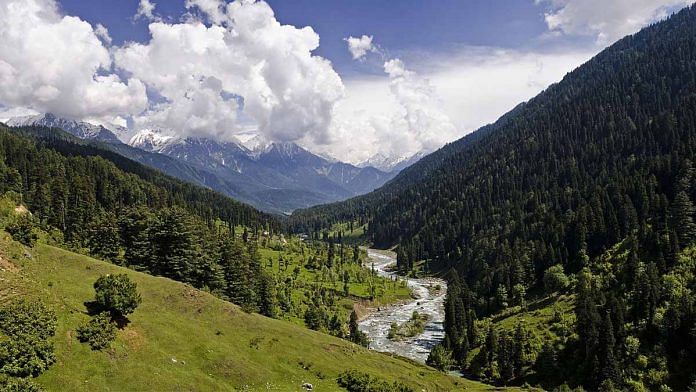New Delhi: The Jammu and Kashmir government declared all land transfers that took place under the Jammu and Kashmir State Land (Vesting of Ownership to the Occupants) Act, 2001, also known as the Roshni Act, null and void Sunday.
This is a welcome change as “somebody turned off the switch” on the Roshni Act scandal that has been going on for two decades, ThePrint’s Editor-in-Chief Shekhar Gupta said in episode 607 of ‘Cut The Clutter‘.
Land grab through Roshni Act
J&K was the first region in India to implement a land reform law in 1950 but a lot of land grab took place due to lax governance, with political elites encroaching on valuable land and the poor doing the same for inexpensive land, said Gupta.
In 2001, the National Conference government, led by Farooq Abdullah, enacted the Jammu and Kashmir State Land (Vesting of Ownership to the Occupants) Act that sought to regularise unauthorised land.
“Anybody who had grabbed this land in the past, could now come to the government, make an application and pay a certain fee. Once the fee was paid, the land or property would be regularised in the hands of the owner,” explained Gupta.
The J&K government then said they would collect fees to the tune of roughly Rs 25,000 crore, which would then be used to upgrade the region’s electricity generation, thus bringing “roshni” into the lives of the Kashmiris.
However, there were fears that this was just a way of favouring the elite, similar to a situation in the national capital, Gupta pointed out.
“In Delhi, there is this colony called Sainik Farms where people went and built huge unauthorised mansions. Today, nobody knows what to do with them. You can’t dismantle them or the government thinks dismantling them is too complicated. At the same time, if you charge a fee and regularise them…then there will be a public outcry that you [the government] have favoured the elite. So, you had a similar situation in Kashmir as well.”
Also read: 12 laws repealed, 14 amended — what exactly changes under new land orders in J&K
Amendments to Roshni Act over the years
A major problem of the Roshni Act was that it applied to only those who had grabbed land by 1990. Therefore, there were a lot of complaints from those who had taken land between 1990 and 2001.
In 2003, the PDP-Congress government led by Mufti Mohammad Sayeed amended the law to shift the cut-off date from 1990 to 2004.
“People began grabbing more and more land… or buying it from the poor… on the presumption that this will soon get regularised,” said Gupta.
In 2007, the cut-off date was further shifted by the Ghulam Nabi Azad government to 2007.
However, in 2014, a report by the Comptroller and Auditor General of India (CAG) found irregularities in the transfer of the encroached land to occupants from 2007 to 2013. The report noted that the government had only collected Rs 76 crore of the estimated Rs. 25,000 crore.
Gupta explained that the actions of different J&K governments were like shifting the starting point of a race. “This was an organised legalised injustice,” he remarked.
By 2014, the BJP had formed a government at the Centre. Four years later, the then J&K governor Satya Pal Malik repealed the Roshni Act.
“As he repealed this Act, he said anybody who has already got his land regularised by paying the fee, that is okay…but no fresh applications can come in now…,” said Gupta. Under this, 71,000 acres of land in Jammu and 4,174 acres of land in Kashmir were regularised, he added.
Now, the government has set up a committee to recover all the land that was regularised through the Roshni Act, in the next six months.
Gupta said this will be difficult because after people got the land, they must have started building houses and using it in other ways.
Watch the latest episode of CTC here:




This shows how Abdulla family followed by some other leaders of Kashmir manipulated the things and captured huge land by making verious amendment in the act and grabbed the valuable land. This led to the wiping out the real owner from the region. This is the reason that all these Kashmiri leaders are deadly against the abrogation of article 370 and the subsequent decision of court against this act. Further J&K government declares the Roshni Act as null and void. Now as per the latest orders all the land transferred to the occupants has to be retrieved back within six months, effective from October 31, 2020. This game was played by Abdulla family in collaboration with Congress led to a scam of Rs 25000 crore. These are all the reason that leaders of the Kashmir especially Farooq advocating to take the help of China for restoring article 370.In fact, the leaders of Kashmir and of Congress together looted the state to the maximum and built their empire. They all must be tried out under various laws before they fled from the country.